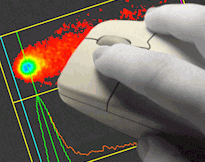Resveratrol & the comet assay
- Details
- Created: Thursday, 07 April 2016 11:10
 A pair of researchers from the Department of Food Chemistry and Toxicology at the University of Vienna have been exploring whether Resveratrol (RSV), a naturally occurring polyphenol, modulates the topoisomerase inhibitory potential of doxorubicin in a human cell line.
A pair of researchers from the Department of Food Chemistry and Toxicology at the University of Vienna have been exploring whether Resveratrol (RSV), a naturally occurring polyphenol, modulates the topoisomerase inhibitory potential of doxorubicin in a human cell line.
RSV is a naturally occurring polyphenol, which can be found in a variety of plants such as grapes, peanuts and berries. The scientist conducted a literature review and it has been shown that RSV possesses antiproliferative effects in a broad range of different cancer cells by influencing (amongst others) pathways involved in cell cycle progression and apoptosis induction.
In addition, RSV is currently being widely discussed as potentially useful for anticancer therapy in combination with classical chemotherapeutics, e.g., the topoisomerase II (TOP II) poison doxorubicin (DOX).
TOP are highly conserved enzymes that are essential for the maintenance of DNA integrity during all processes affecting DNA topology such as replication, transcription or repair. Two isoforms of TOP II are expressed in humans: TOP IIα and TOP IIβ. Both are capable of removing knots and preventing over- and under-winding of the double helix by generating transient double strand breaks
The dosage of DOX during chemotherapy is limited by side effects as cardiotoxicity, as well as by DOX-resistant cancer types. In recent years many attempts have been made to overcome the resistance, for example by a combination of the chemotherapeutic with plant polyphenols
The investigators sought to address the question: “Does RSV affect DOX-induced genotoxic and cytotoxic effects?” They particularly examined TOP II in HT-29 colon carcinoma cells. HT-29 is a well characterised human colon cancer cell line, originating from the intestinal tract, and was selected as a model system.
To detect potential DNA damaging or protective effects after co-incubation of RSV and DOX the single strand DNA, gel electrophoresis assay (comet assay) was performed. After staining of the cells with 10 µg/mL ethidium bromide solution the tail intensity (amount of nuclear DNA found in the tail) was determined by the software Comet Assay IV (Perceptive Instruments, Suffolk, UK).

After conducting the experiments, the investigators reported that RSV was found to counteract DOX-induced formation of DNA-TOP-intermediates at ≥100 µM for TOP IIα and at 250 µM for TOP IIβ. As a consequence, RSV modulated the DNA-strand breaking potential of DOX by mediating protective effects with an apparent maximum at 100 µM. At higher concentration ranges (≥200 µM) RSV diminished the intracellular concentrations of DOX. Nevertheless, the presence of RSV slightly enhanced the cytotoxic effects of DOX after 1.5 h and 24 h of incubation.
The scientists concluded after this investigation that, at least in cell culture, RSV was found to affect the TOP-poisoning potential of DOX and to modulate its cytotoxic effectiveness. They concluded that further studies are needed to clarify the impact of RSV on the therapeutic effectiveness of DOX under in vivo conditions.
For more information, please refer to the original publication:
Schroeter, A.; Marko, D.. Molecules 2014, 19, 20054-20072.
